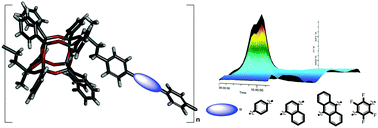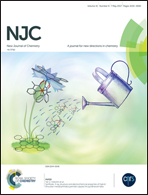Unusual cis and trans architecture of dihydrofunctional double-decker shaped silsesquioxane and synthesis of its ethyl bridged π-conjugated arene derivatives†
Abstract
Double-decker silsesquioxanes have gained a high reputation in many branches of chemistry and process development. In particular, catalytic processes that convert double-decker silsesquioxanes into important functional classes of fine chemicals are a central topic of contemporary organosilicon chemistry. Although the 9,19-di(hydro)octaphenyl double-decker silsesquioxane (DDSQ-2SiH) is known, we report its cis and trans structure and X-ray structure for the first time. The combination of DDSQ-2SiH in a known hydrosilylation reaction protocol with precise reaction time control (FT-IR in situ apparatus) allowed us to selectively assemble a series of previously unreported molecular double-decker silsesquioxanes with ethyl bridged π-conjugated arenes. These compounds were used as a molecular model to obtain their respective macromolecular hybrid analogues. The obtained compounds were characterized spectroscopically and their thermal parameters were also verified.



 Please wait while we load your content...
Please wait while we load your content...